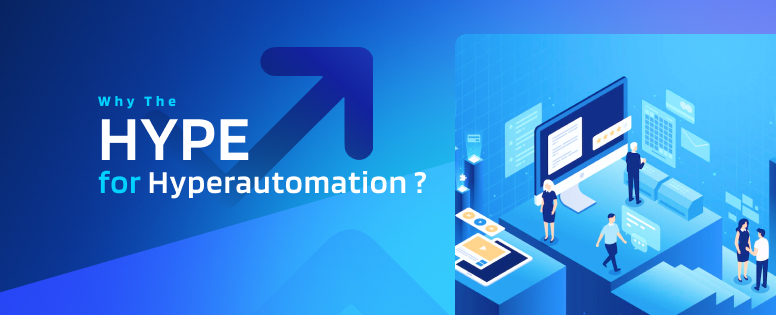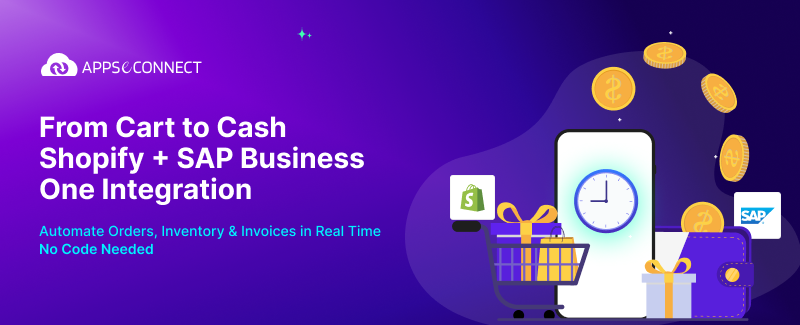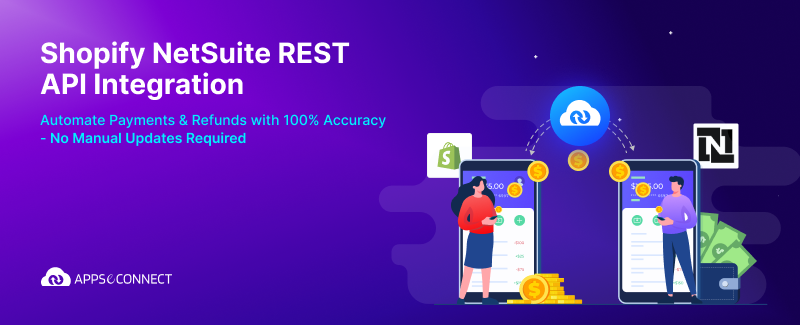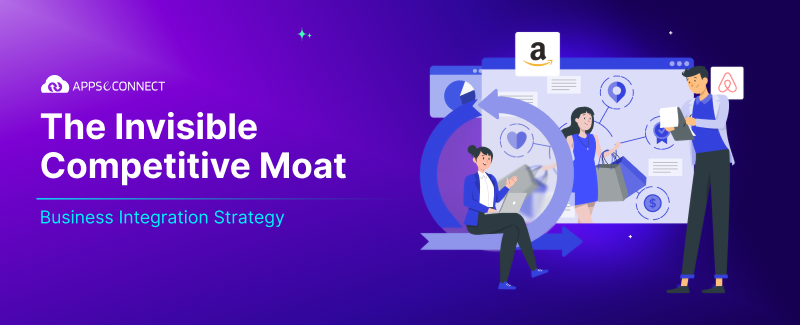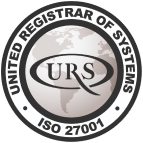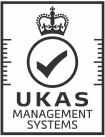The consistent push across the industry to deliver results faster than ever requires technology to also stay in pace with that break-neck speed. Thus, with the growing trend of businesses automating every workflow within their organization to accelerate processes, a new approach towards automation has come to the forefront – Hyperautomation. It is the next step in the evolution of business automation that combines Artificial Intelligence (AI) with Robotic Process Automation to enable the automation of virtually any number of repetitive tasks executed by a user.
If you have multiple business applications running in your business and want to seamlessly connect your entire software stack under a single, intelligent, and secure platform to get started with the first step for achieving Hyperautomation for your business processes, implement APPSeCONNECT’s robust integration connectors and achieve exponential growth in your business.
What is Hyperautomation?
According to Gartner, Hyperautomation is defined as “A business-driven, disciplined approach that organizations use to rapidly identify, vet, and automate as many business and IT processes as possible.” For enabling Hyperautomation, organizations implement a wide suite of tools, technologies, and platforms such as Artificial Intelligence (AI), Machine Learning, Robotic Process Automation (RPA), Business Process Management (BPM), Integration Platform as a Service (iPaaS) and many more.
Hyperautomation is quickly becoming the major technological advancement for organizations to enable true digital transformation and eliminate human involvement across low-value, bulk repetitive processes. Through the removal of manual operation from these processes, Hyperautomation not only frees up human resources to be dedicated towards more valuable operations but also accelerates the workflow while removing data redundancies due to human errors.
The Difference Between Automation and Hyperautomation
Automation and Hyperautomation on the surface may sound similar to each other, but it cannot be furthest from the truth. The scope of automation is much more limited and is performed across a single platform. Hyperautomation is an expansion of automation through a layer of advanced technologies and is executed across an entire ecosystem of technologies, systems, and platforms. The core difference between Automation and Hyperautomation includes:
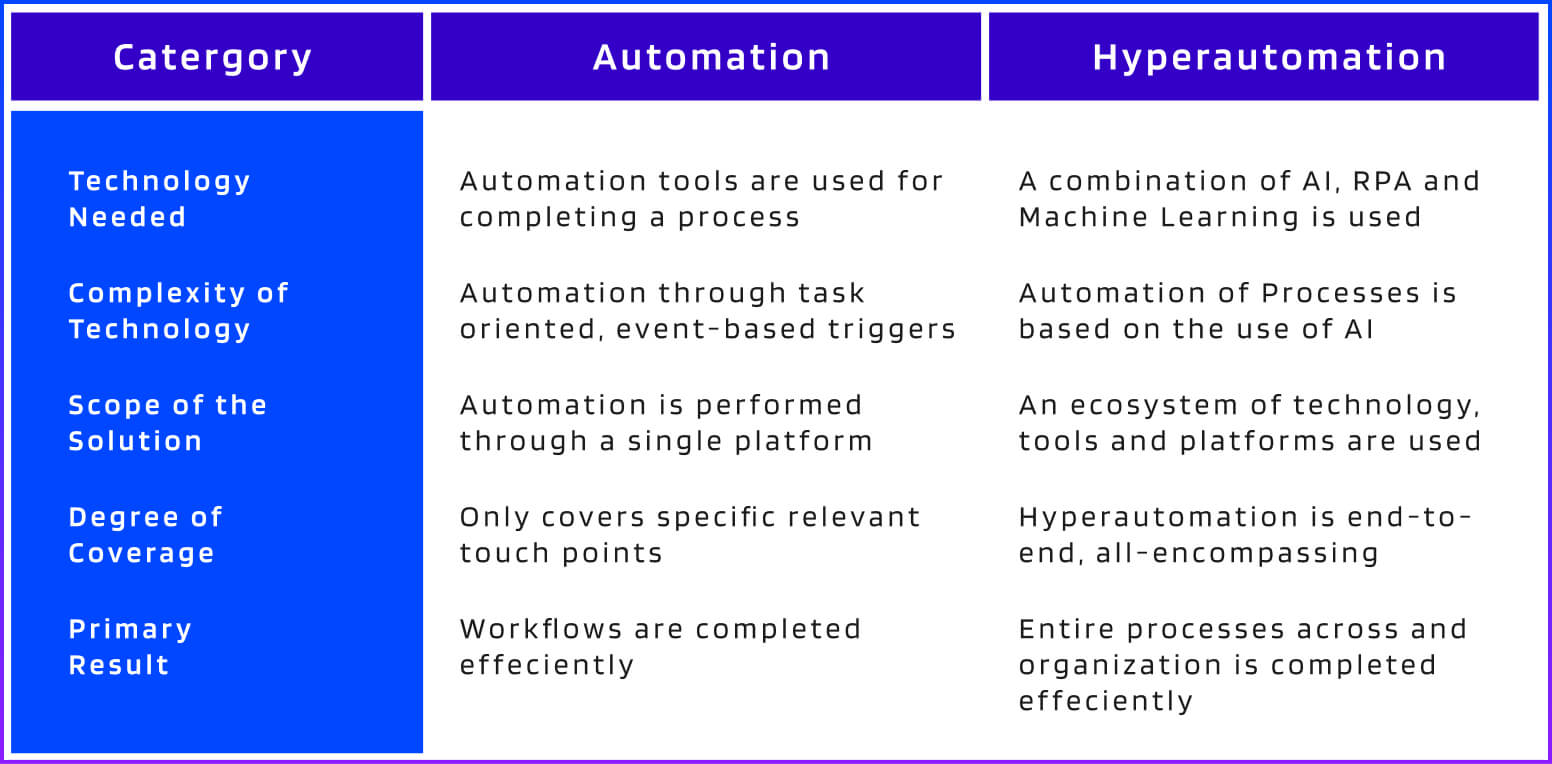
Benefits of Hyperautomation
Enabling end-to-end automation across every touchpoint of an organization’s workflow is the primary focus of Hyperautomation, and through it offers a wide range of benefits to allow businesses to sustainably scale their operations and deliver to the market faster. Hyperautomation enabled through the implementation of AI, RPA, and a robust low-code iPaaS platform can provide businesses with a competitive edge with the following benefits:
Improves Automation of Processes
Through the combination of RPA, AI, and Machine Learning, Hyperautomation extends the capabilities of automation within a business. By making automation more intelligent, Hyperautomation assembles multiple components and technologies to amplify the extent of automation that an organization can apply to the enterprise, allowing them to get streamline a large number of workflows more efficiently.
Enables More Focused Team Collaboration
Hyperautomation enables improved synchronization of team efforts with the organization’s primary goals. It fosters a better connection between the different departments of a business by allowing ready access to all relevant information stored within the different databases of teams. Together, with Hyperautomation and intelligent business tools, every team throughout an organization will find it easier to collaborate with each other.
Allows Business Flexibility
With market trends always in flux, businesses need to be flexible to readily adapt to the changes. Through Hyperautomation, organizations can achieve effortless scalability across the organization. Hyperautomation is implemented with a focus to allow faster business operation and to allow seamless implementation of tools and technologies into the network for future requirements. Through this, it allows enterprises to tackle new market demands with flexibility and even leverage them to its benefits.
Enhances Company ROI
The primary goal of any organization for implementing a tool, solution, or workflow is to improve revenue generation. Hyperautomation makes it possible to deliver better ROI through end-to-end automation of multi-layered processes. For workflows involving multiple steps such as invoice generation, instead of just extracting the purchase data Hyperautomation streamlines the entire pipeline for invoice processing.
Makes a Business Future Ready
Hyperautomation through the combination of RPA enhanced with AI and Machine Learning goes far beyond the capabilities of what is possible with traditional automation. Hyperautomation is an iterative process that constantly evolves to allow machines to be future-ready. The digital infrastructure reads into the different business processes, understands how it works through machine learning, and delivers analytics to allow organizations to improve their workflows. Thus, it ensures that even years down the road, the digital ecosystem is constantly getting updated and does not become obsolete.
Hyperautomation Use Cases
The application of Hyperautomation can be implemented across every vertical of the industry. The technology is customizable to meet the specific needs of that industry. The following showcases some of the most prominent use cases of Hyperautomation.
Hyperautomation in Healthcare and Medical
The healthcare industry has to operate with several databases, repetitive processes, contractual obligations, and regulations to comply with. Thus, with Hyperautomation and data integration in the Healthcare industry, organizations can streamline and automate services, speed up processes, and reduce costs for complex processes such as patient scheduling, emergency management, insurance claiming, bill processing, and many more.
Hyperautomation in Finance and Banking
The simple act of transferring money from one account to another is a multi-task process involving authorizing the transaction, crediting the receiving account, debiting the paying account, and many more. Ensuring that all these processes are carried out securely and efficiently makes Hyperautomation prudent for the banking and finance industry. Through the implementation of Hyperautomation, financial institutions can streamline their calculations, transactions, and communications with customers, buyers, fund management, and other entities
Hyperautomation in Retail
The retail segment has undergone a massive change with several businesses shifting to online eCommerce from their traditional brick-and-mortar store to expand their operations. Online shopping was already becoming extremely popular among customers, which got more solidified with the onset of the pandemic. Hyperautomation can help these new budding online retailers as well as existing companies in the online commerce market automation for major workflows such as order management, payments, transportation, warehousing and inventory, supplier management, risk management, procurement, and data monitoring.
Hyperautomation in Manufacturing
The use of robots and automation within the manufacturing industry has been a major topic of concern and that it will result in the replacement of humans and cause severe crises and job losses. Hyperautomation aims to not replace humans but work in collaboration to automate and complete tasks seamlessly. Hyperautomation in the automation industry complements human workers by enabling real-time monitoring, automating different parts of the manufacturing pipeline, allowing predictive maintenance of machinery and manufacture by leveraging intelligent workflows.
Conclusion
Hyperautomation is without a doubt the next step in creating more effective human-machine collaboration to allow businesses to grow faster. The technology has the potential to significantly improve the bottom line for enterprises and enable future-proof scalable growth. With the industry-wide benefits Hyperautomation offers, the hype for it continues to grow and organizations need to begin working on adopting it to stay competitive.
If you have multiple business applications running in your business and want to seamlessly connect your entire software stack under a single, intelligent, and secure platform to get started with the first step for achieving Hyperautomation for your business processes, implement APPSeCONNECT’s robust integration connectors and achieve exponential growth in your business.




